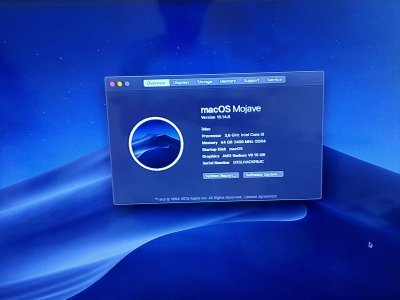** Interim Update: Thunderbolt Local Node and Thunderbolt Bus **
First of all, don't get too excited.

Second of all, the screenshots below were taken on my Asus X99 Deluxe II Hackintosh. They show a complete Thunderbolt device tree!
- Thunderbolt Local Node --> Successful
- ThunderboltIPPort defining en6 (Thunderbolt Ethernet Bridge)
- ThunderboltDPOutAdapter for Target Display Mode
- AppleThunderboltPCIDownAdapter and AppleThunderboltPCIUpAdapter
- Thunderbolt Bus --> Successful
- Notice that Thunderbolt section of System Information does not say "No drivers are loaded". Instead, it displays the Thunderbolt Bus
I have a 2012 MacBook Air with Thunderbolt 2. So later this week I will attempt:
- Hack-to-Mac Thunderbolt Ethernet connection
- Hack-to-Mac TargetDisplayMode
- Hack-to-Mac TargetDiskMode
Fine Print:
- This only works with the Asus ThunderboltEx II card. It will not work with Asus ThunderboltEX 3.
- I have the ThunderboltEx II Dual.
- This card only works on Asus X99 motherboards.
- Hot plug is not yet working. I just installed the card after approximately 3 weeks of wait (shipped from China via Ali Express) so have not fine-tuned the setup.
- I have attached a PowerColor Gaming Station eGPU(via Apple Thunderbolt 3 to Thunderbolt 2 adapter) that includes USB 3 ports and an Ethernet port.
- The USB ports and Ethernet port are working properly!
- eGPU is not working. Might have to enable CSM Support.
If you were wondering why I built an "ancient" X99-based Hackintosh, this is the answer.
Now the hard part begins. I'll analyze the DSDT/ACPI tables to see if there's anything we can learn. But my suspicion is that the
Thunderbolt 2 Falcon Ridge controller is treated differently by macOS Thunderbolt drivers, and it may not require any assistance from the BIOS/Firmware. This could mean, therefore, that any lessons learned from this
experiment may not apply to Titan Ridge.
View attachment 419263
Close-up of
IORegistryExplorer:
View attachment 419269
Close-up of
Thunderbolt section of
System Information:
View attachment 419268
Thunderbolt Ethernet Bridge device automatically added to the bottom of the list:
View attachment 419264

